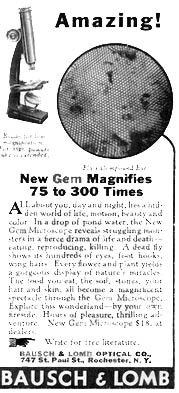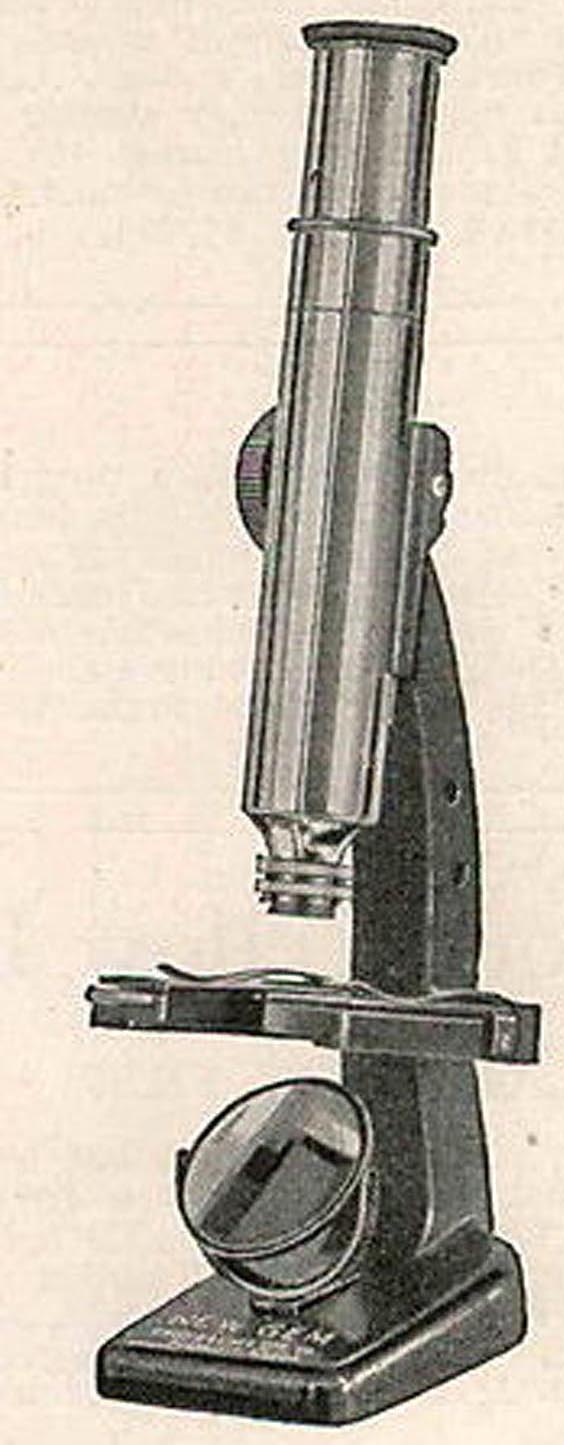DESCRIPTION:
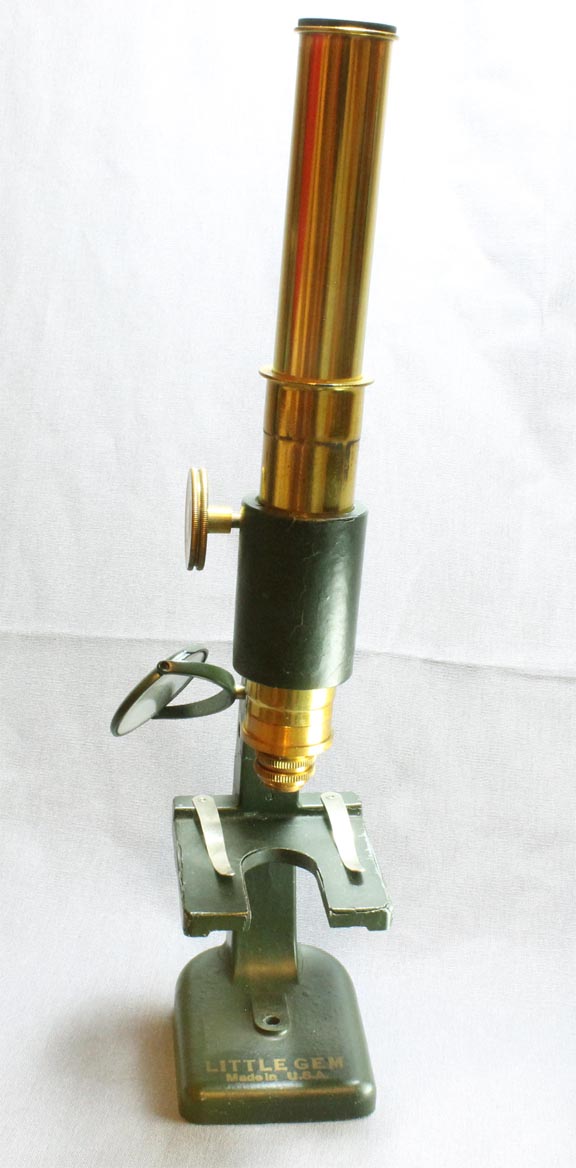 This microscope is made of dark green painted iron and lacquered brass. It comes in a yellow cloth lined cardboard case which is dark green on the outside and has a yellow sticker on its end signed:
This microscope is made of dark green painted iron and lacquered brass. It comes in a yellow cloth lined cardboard case which is dark green on the outside and has a yellow sticker on its end signed: The Little Gem Microscope, Made in the U.S.A.
The foot is signed LITTLE GEM, Made in U.S.A.
The microscope is divisible at the level of the stage and can be removed from the foot and its support piece and placed directly on a surface or large object; this feature was also found in Wollensak microscopes of the 1930's. Also like the Wollensak, the mirror can be removed from the foot and attached to the side of the limb to illuminate opaque objects from above, utilizing a choice of two different holes, one above the other, on the side of the limb. The lacquered brass tube is thinner than most microscopes meant for serious use. Focusing is by rack and pinion controlled from the right side by a knurled knob. Two stage clips are permanently affixed to the stage. There is a single drawtube without any markings. The objective is divisible. The stage has a cutout from its front.
The Little Gem measures about 2.7 x 2 x 6.75 inches (68mm x 52 mm x 171 mm) collapsed to its minimum size, and is about 10 inches(254 mm) high in working position with the drawtube extended.
HISTORY OF THE LITTLE GEM MICROSCOPE
This little microscope was meant for amateurs. It was advertised extensively from about 1932 to 1939. It came in at least two different finishes which included a green base with lacquered brass tube, and, no later than 1934, a black base with chrome-plated tube. The advertising clearly indicates that it was aimed at the amateur market and it was often advertised along side its chief American competitor, the Wollensak microscopes. Although Wollensak offered a variety of models with different magnification ranges, the B & L little Gem, although offered in different finishes, was offered in only one configuration with the one range of magnifications using the standard divisible objective. During the time it was available it sold for between $12.00 and $19.75. It was also supplied as part of a kit selling for about $28.
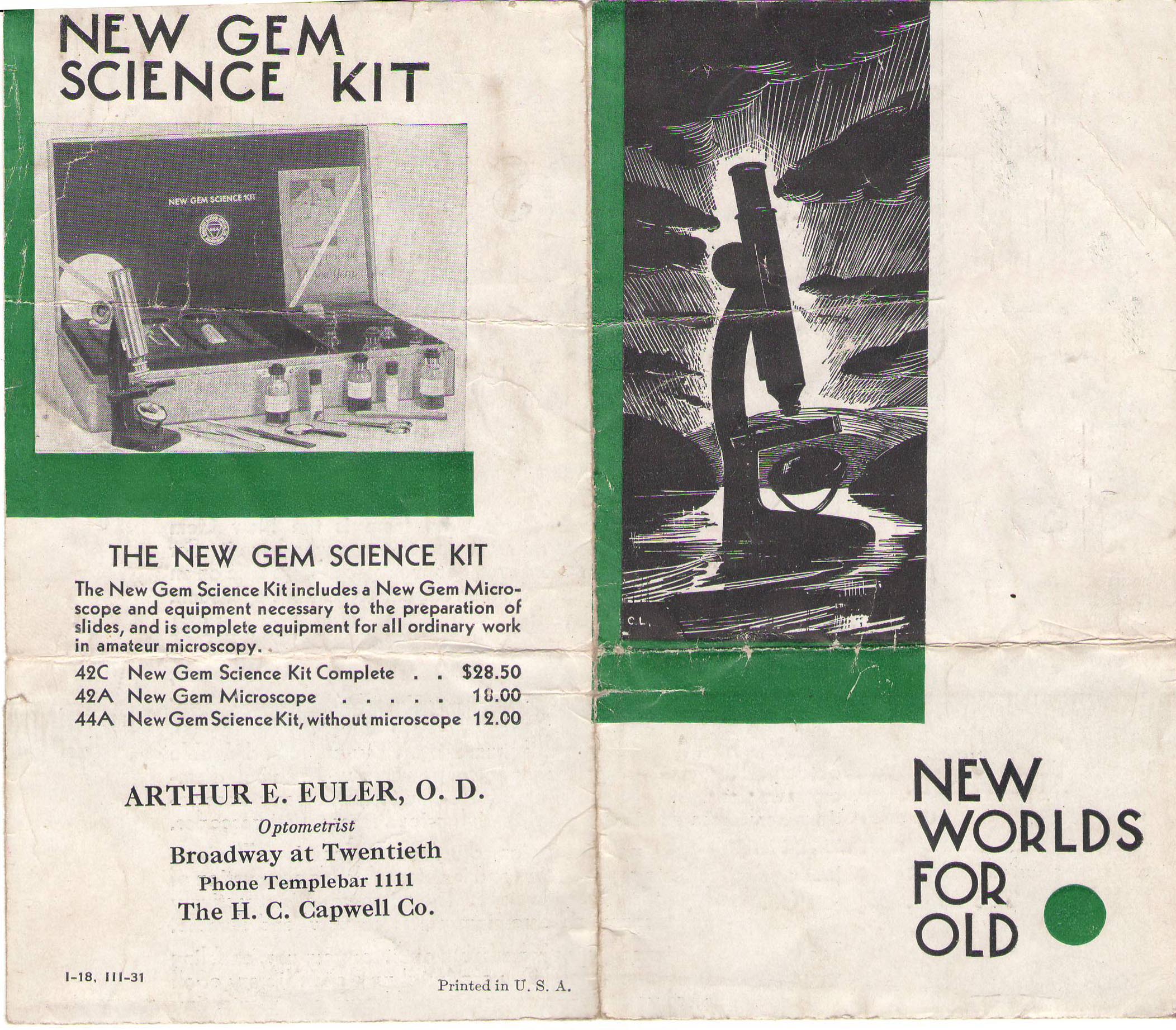
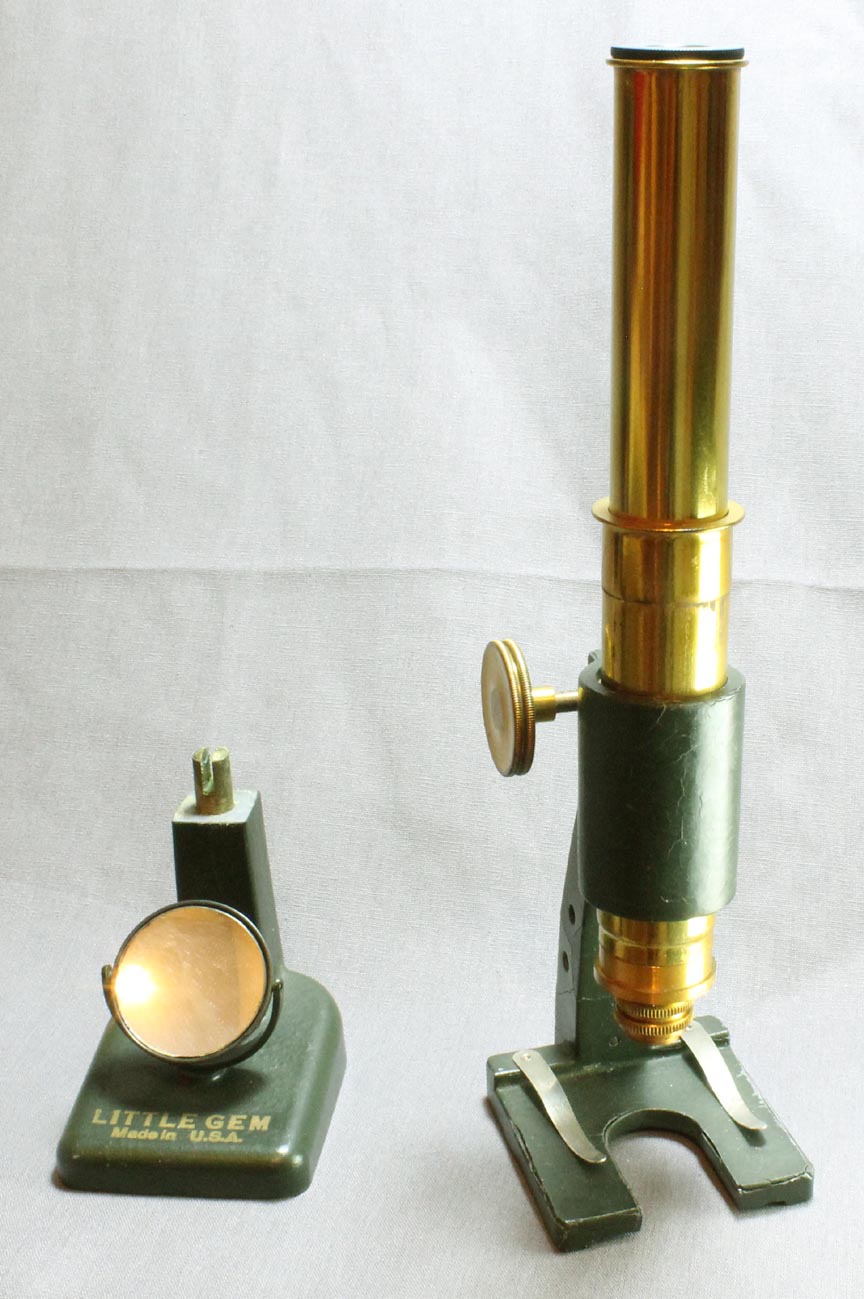
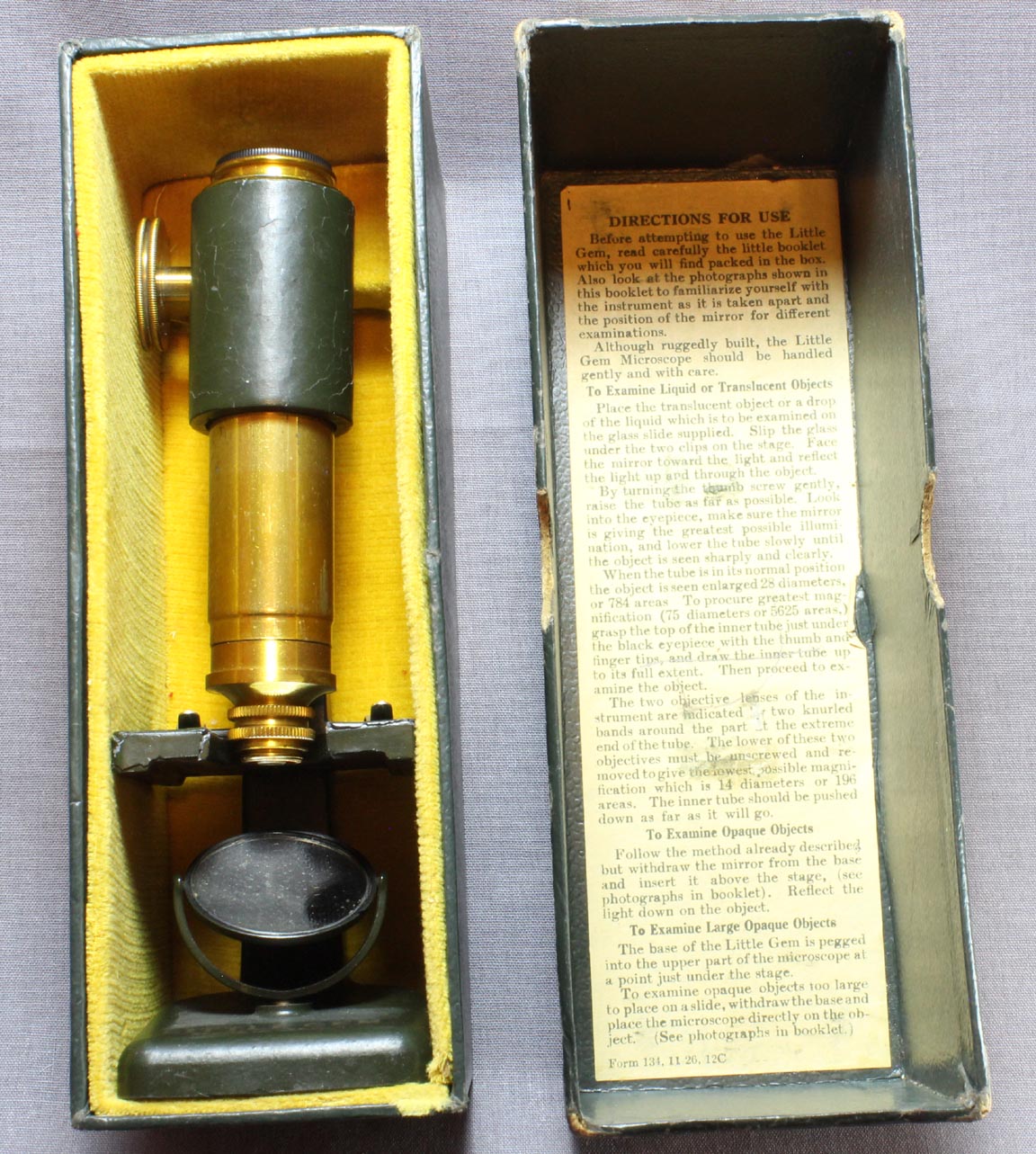
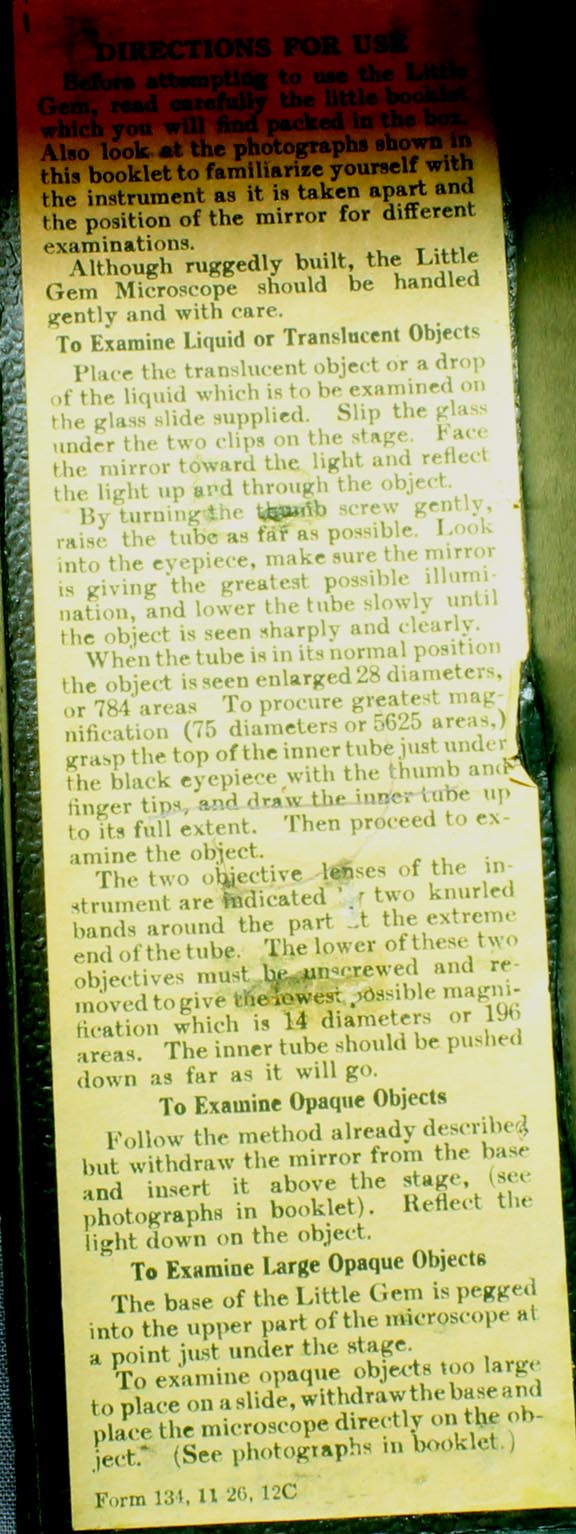
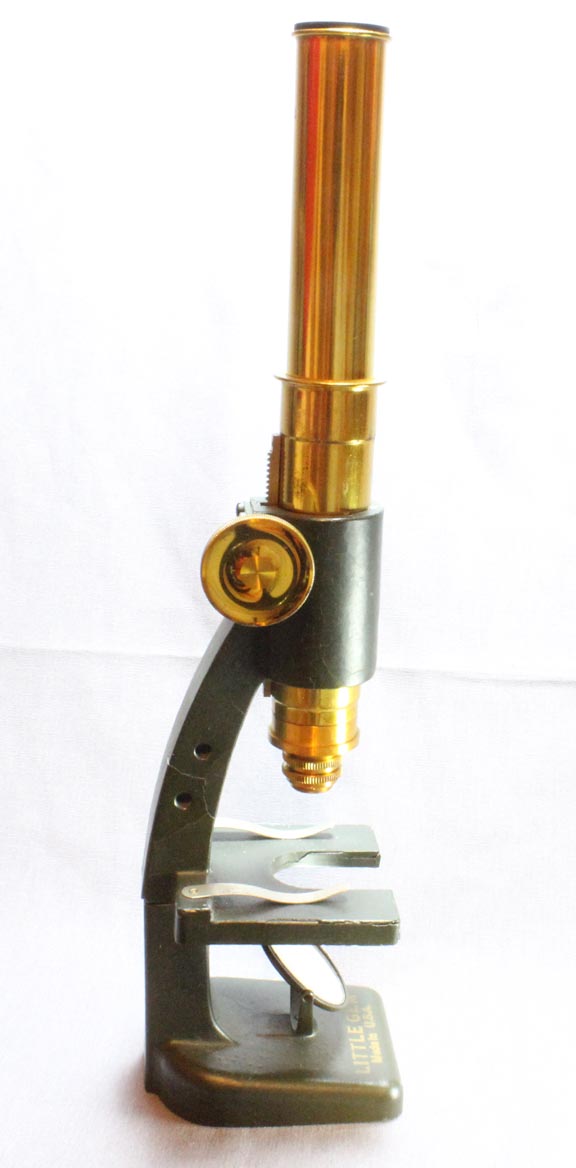
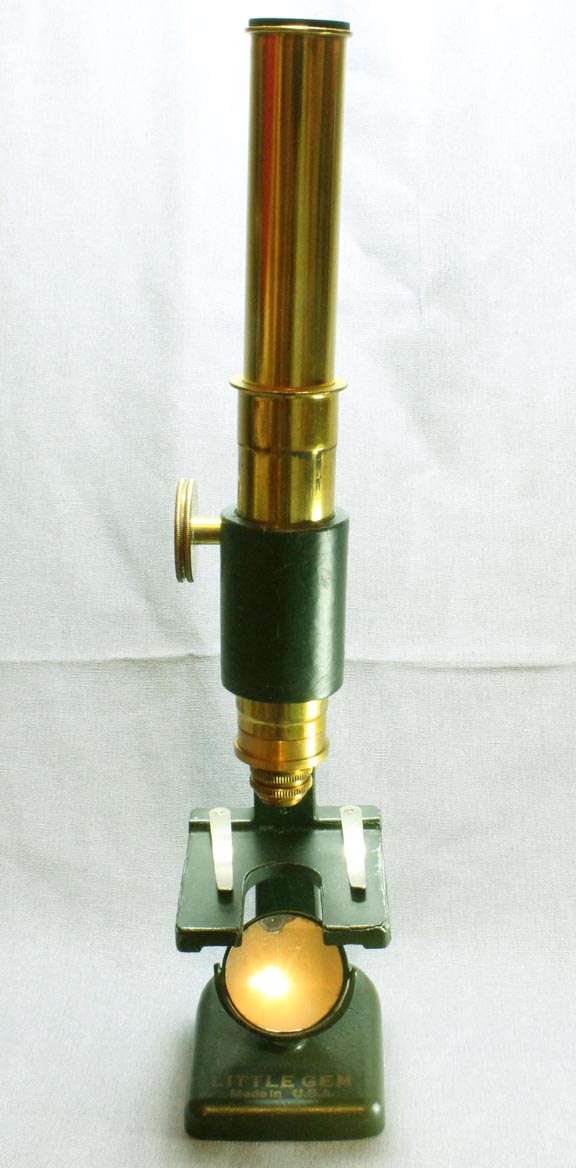
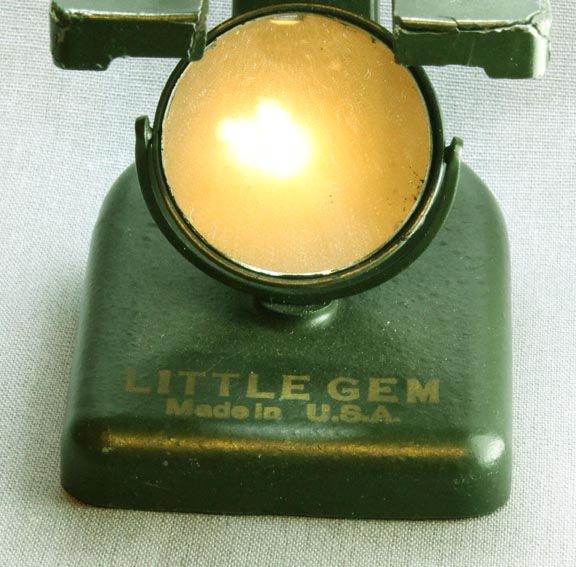
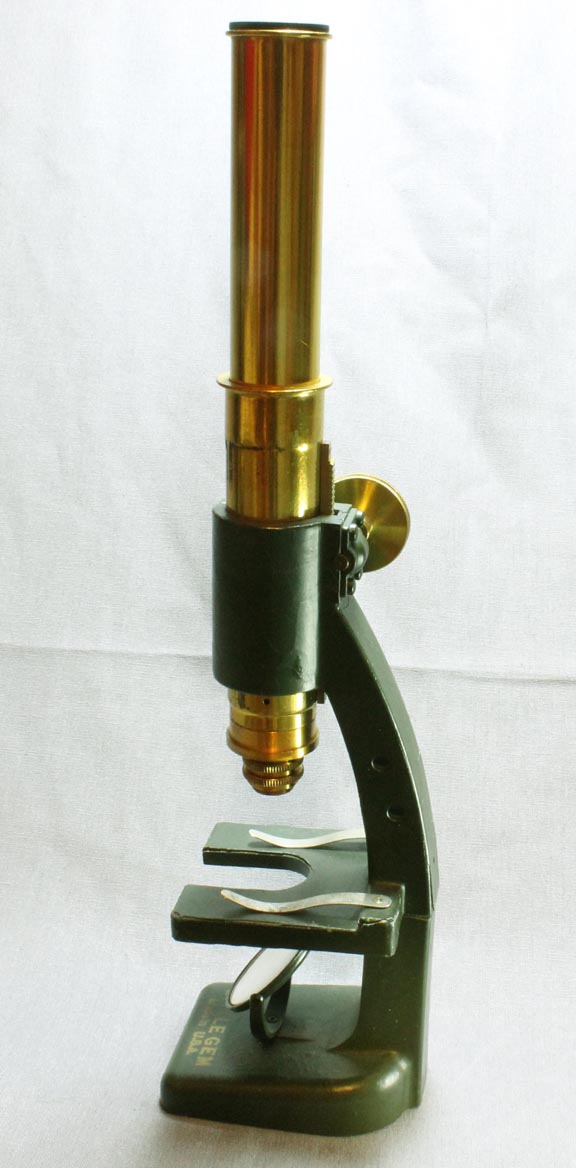
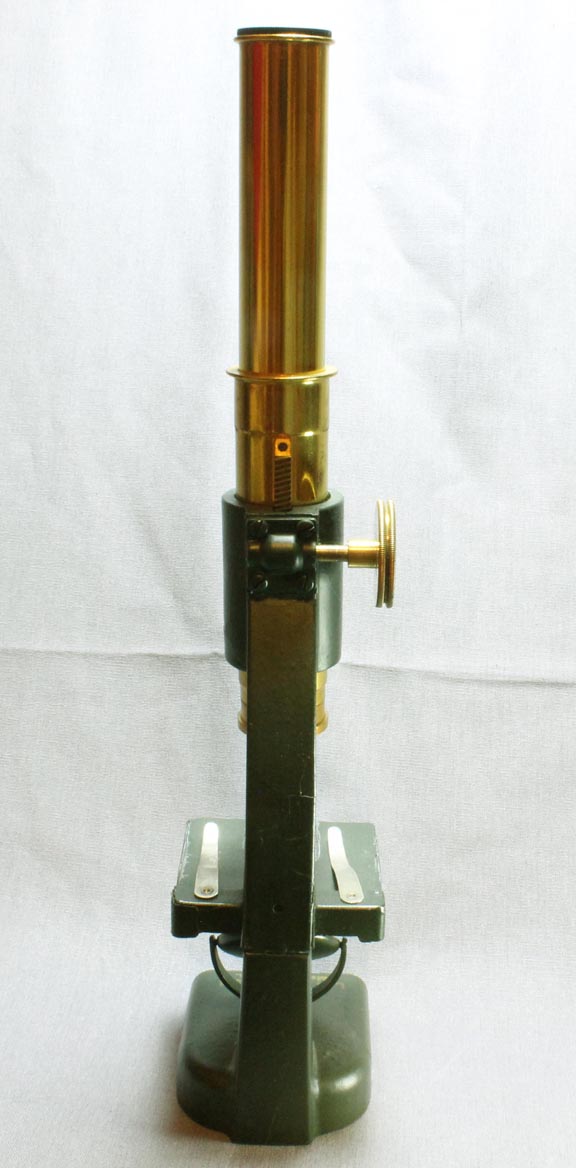
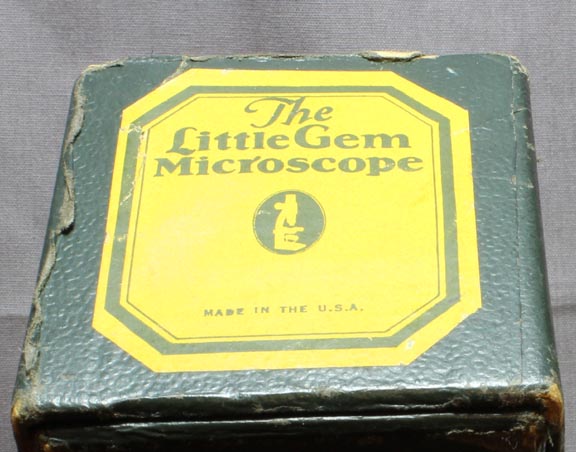
 This microscope is made of dark green painted iron and lacquered brass. It comes in a yellow cloth lined cardboard case which is dark green on the outside and has a yellow sticker on its end signed:
This microscope is made of dark green painted iron and lacquered brass. It comes in a yellow cloth lined cardboard case which is dark green on the outside and has a yellow sticker on its end signed: 
